I can remember a moment nearly four decades ago quite vividly. The exact year escapes me, but I would have been around fourteen at the time and was desperate to get into these new-fangled home computers which were beginning to become popular. My Dad and I sat down in front of our newly purchased Commodore Vic 20 and began to program. The Vic 20 was a curious beast. It had a RAM capacity of three and a half kilobytes. Yes, younger readers, you did read that correctly. Despite the memory limitations, the Vic 20 was a solid and popular choice as it did a great line in cartridge-based games. I will never forget my efforts trying to defeat The Count in Adventure International’s titular game.
However, on this occasion we were not trying to play games but were typing in a program given to me by a kindly neighbour who had provided a large stack taken from his monthly computer magazines. These torn out pages of code would provide me with an informal early education in computer programming and create a level of comfort with technology that has never really left me. I could not write a line of code for love nor money these days, but the prospect of using something new in the world of computers never really bothers me despite my very middle, middle age.
The program we typed in was to generate a world map. For Dad, it was a way of getting me to do something more constructive than playing games. For me, it was about doing something with my father. We spent a good hour or two taking it in turns to enter the lines of BASIC code. Then we ran the program. Nothing happened. We wondered why it was not working, so we turned the VIC off and on and typed it in again. We had assumed that there was something wrong with our input. This time, things went more quickly. We were getting used to typing. The results were the same. Nothing. At this point, we gave up and went to have dinner. Dad would not return to using computers for about 30 years. After our seemingly wasted efforts, he never wanted to touch one again. Yet now, in his retirement, he could not be without one.
I later returned to the map program. I dutifully typed the code in again and ran the program. This time, I decided to wait. A part of me wondered if we had simply not been patient enough. The VIC’s processor, probably powered by an elastic band, chugged away and eventually a map of the world appeared on my old black and white portable television. It was the first time I had ever produced an image on a computer. The moment of triumphal revelation as it began to render on the screen has stayed with me. It is one of those small moments that create curiously defining memories of youth. On that day, the possibilities of image making using a computer began to unfold before me. However, I could have had no clue about the point we have now reached. This may be an opportune moment to play the opening theme tune to Terminator 2: Judgement Day as for the rest of this article I want to talk about the rise of the photographic machine and the increasing use of artificial intelligence in photography.
Before we go further, I think that it is only fair to make my position clear. I am sceptical but open-minded about its use. I admit to having some very serious concerns about its effect on us as photographers and the work we produce. Equally, I am fully aware that the technology is not about to disappear. Garry Kasparov, perhaps the greatest chess player of all time, has more reason to be fearful of AI than most. In 1997, he memorably lost a six-game match to the Deep Blue computer, an event which signalled the end of human pre-eminence in chess. Yet, in his excellent book Deep Thinking, he argues that we should embrace the rise of the machine. With all this in mind, the purpose of this article is not to argue a particular position in the hope of persuading you to think the same. What I want to do here is present some opinions about the use of the technology and provoke some thought and discussion. In order to do this, I contacted Beno Saradzic and Shane McGeehan, artists whose work I admire and opinions I respect, who have very different opinions about AI.
Artificial intelligence occupies a special, slightly scary place in our collective psyche. Who could forget the confrontation between astronaut David Bowman and Hal 9000 in 2001: A Space Odyssey – “Open the pod bay doors Hal.”? Add to this the terrifying yet tragic Roy Batty from Blade Runner and manipulative Ava from Ex Machina, and who could blame us? Fortunately, we also have C3PO from Star Wars and Data from Star Trek for balance. Reality is only a little more prosaic. The performances of DeepMind’s AlphaZero and its variants in the games of chess, shogi, and go are nothing short of extraordinary. How though does it relate to photography?
In an effort to understand AI and photography better, I contacted photographer, artist, and AI enthusiast McGeehan and asked him for some help and thoughts on the matter. I also sent him four of my photographs with a request to “go wild” with AI on the images. I am normally quite protective when it comes to letting other people manipulate photographs. I do not even like sharing high quality JPGs. However, in the interests of “research”, I thought this release of control was worthwhile. The results are fascinating, and I am happy to share them, along with some brief thoughts, here.
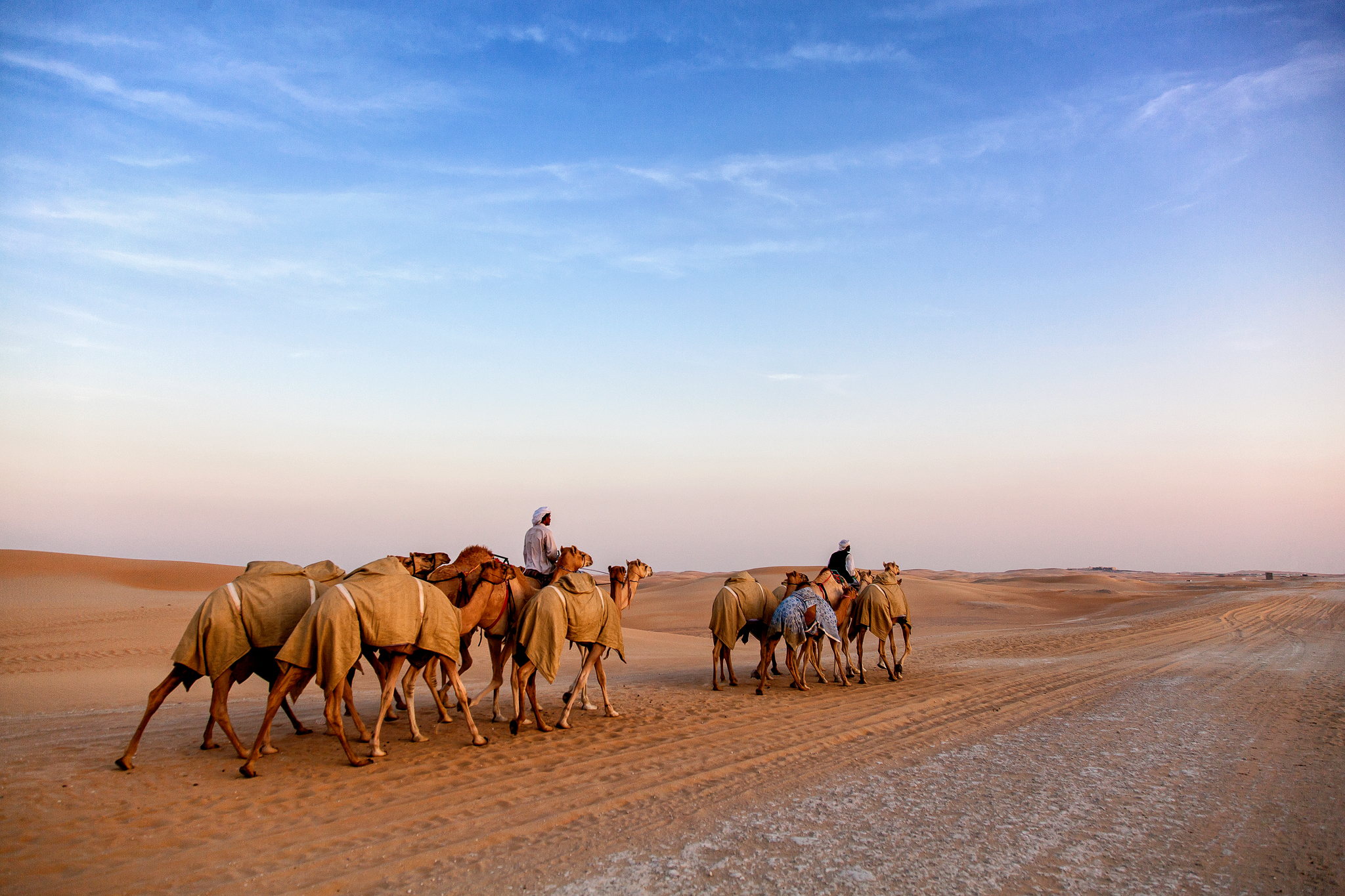
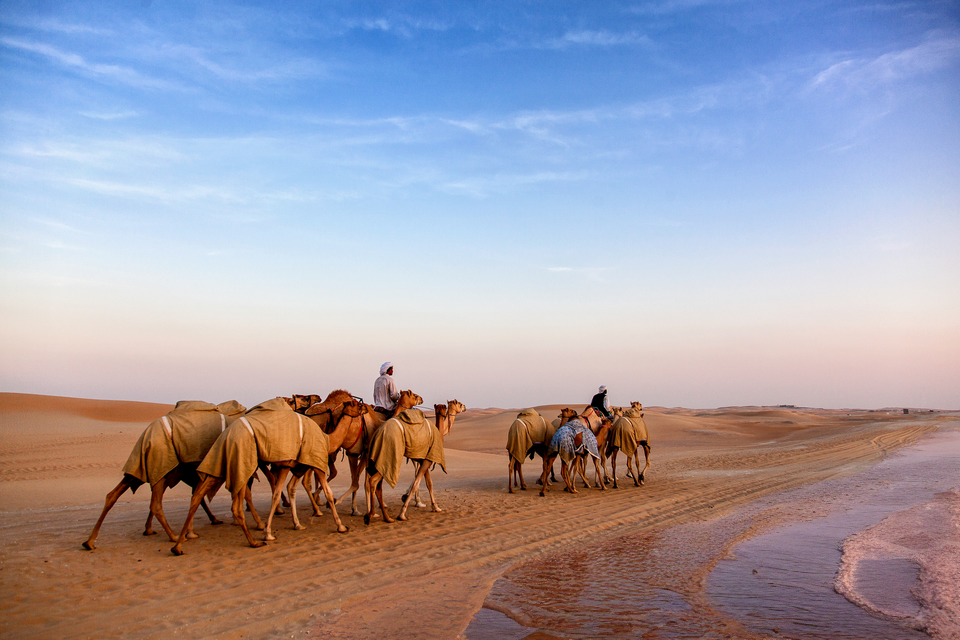
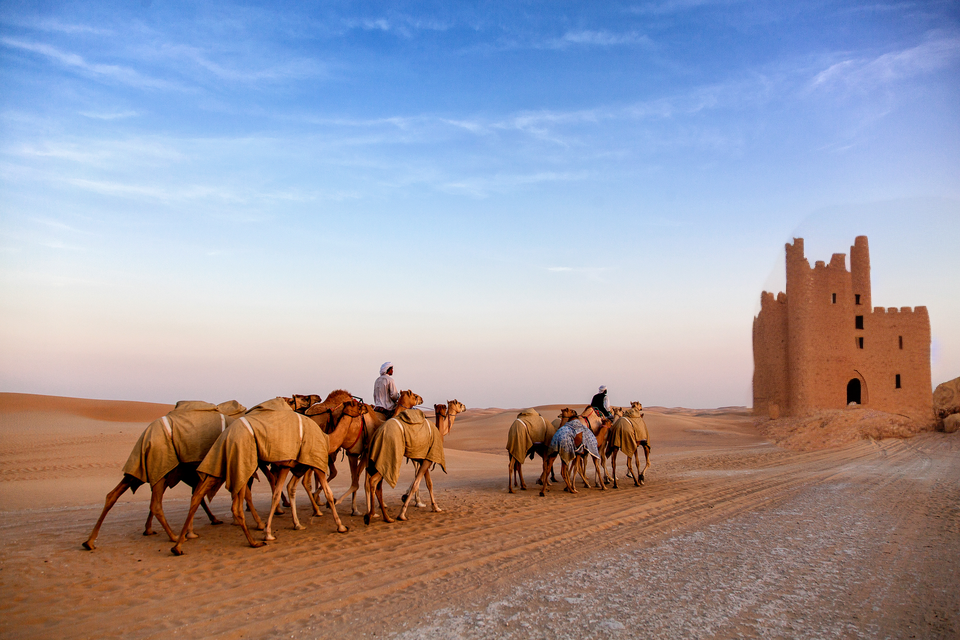
The first AI McGeehan used was Stable Diffusion, where he applied an “in painting” brush. For this process, you brush over an area of an image and instruct the AI, using a text prompt, what to fill the area with. The first effort rather stopped me in my tracks. If I did not know differently, I would swear that the camels are genuinely next to the water. This made me feel a little uncomfortable and shows there is little doubt that we can all be fooled by AI. The second is perhaps less convincing. However, the structure does look like the types of forts and castles that can be found in the region. Google Oman’s Bahla Fort if you need to see with your own eyes. What is critical to consider here is that the technology is not going to become weaker. The images are not going to become less convincing as the processing evolves. One can only imagine how things will look in five or ten-years time.
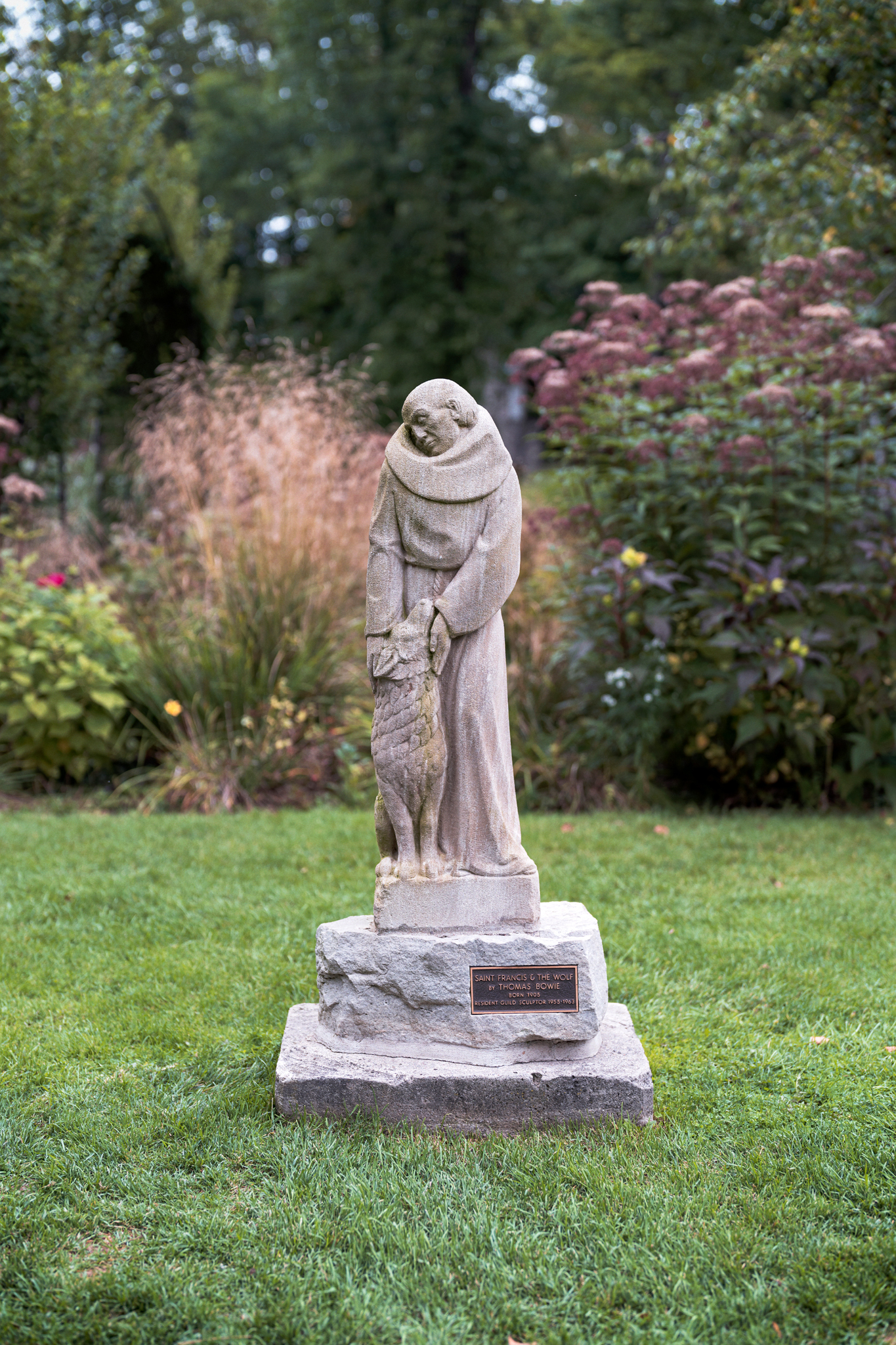
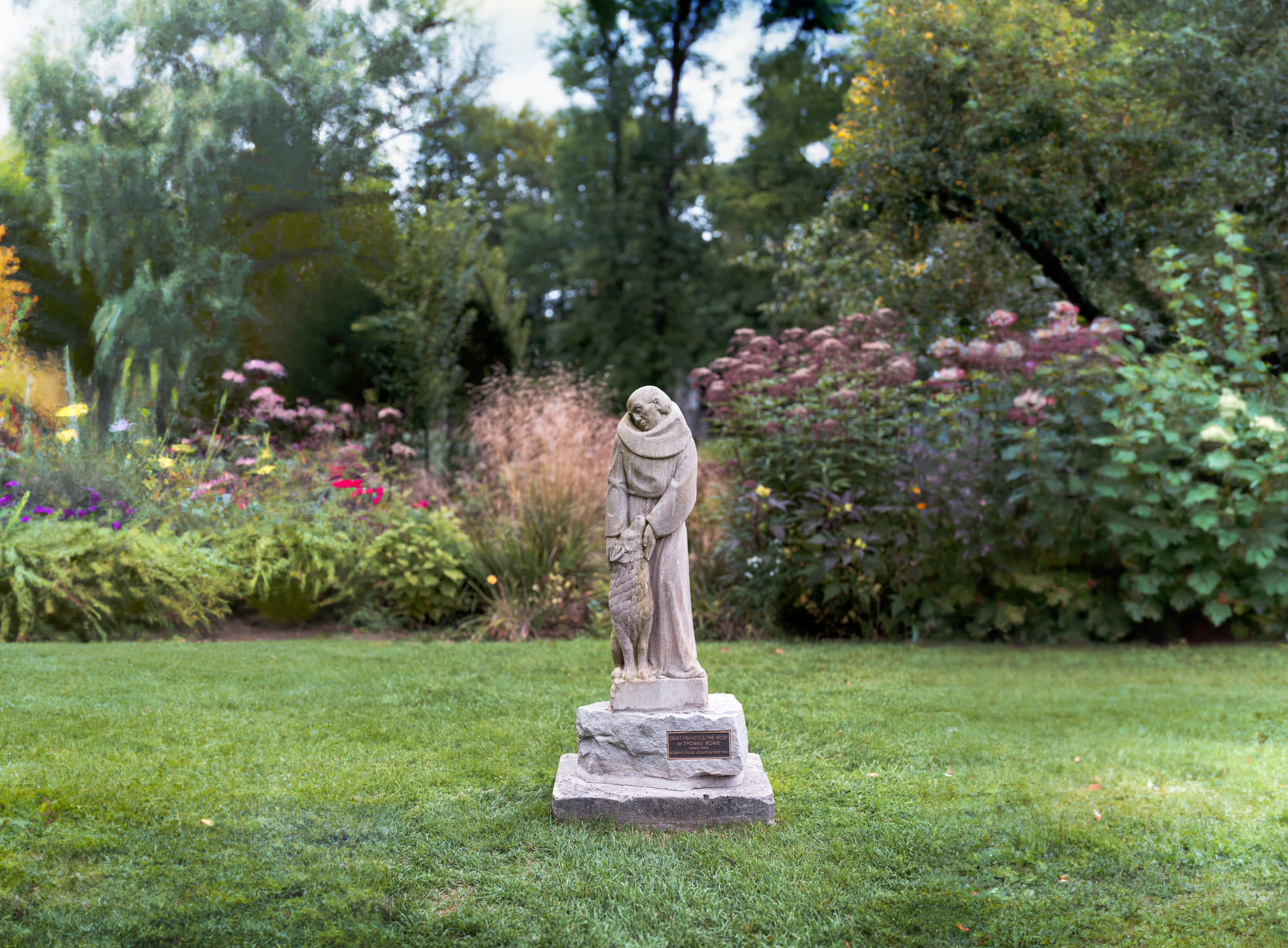
The second image, featuring a statue in a garden, was expanded using a technique called “outpainting” on the DALL·E-2 AI. Like the previous example, you give the AI text-based instructions as you work. The results here make me think of Photoshop’s content aware healing brush tool with the injection of a large dose of steroids. Whilst the results are not perfect, the overly bright pink-purple flowers being the obvious flaw, the fact that the AI built a recognisable garden and accounted for the shallow depth of field in the original photograph is impressive.
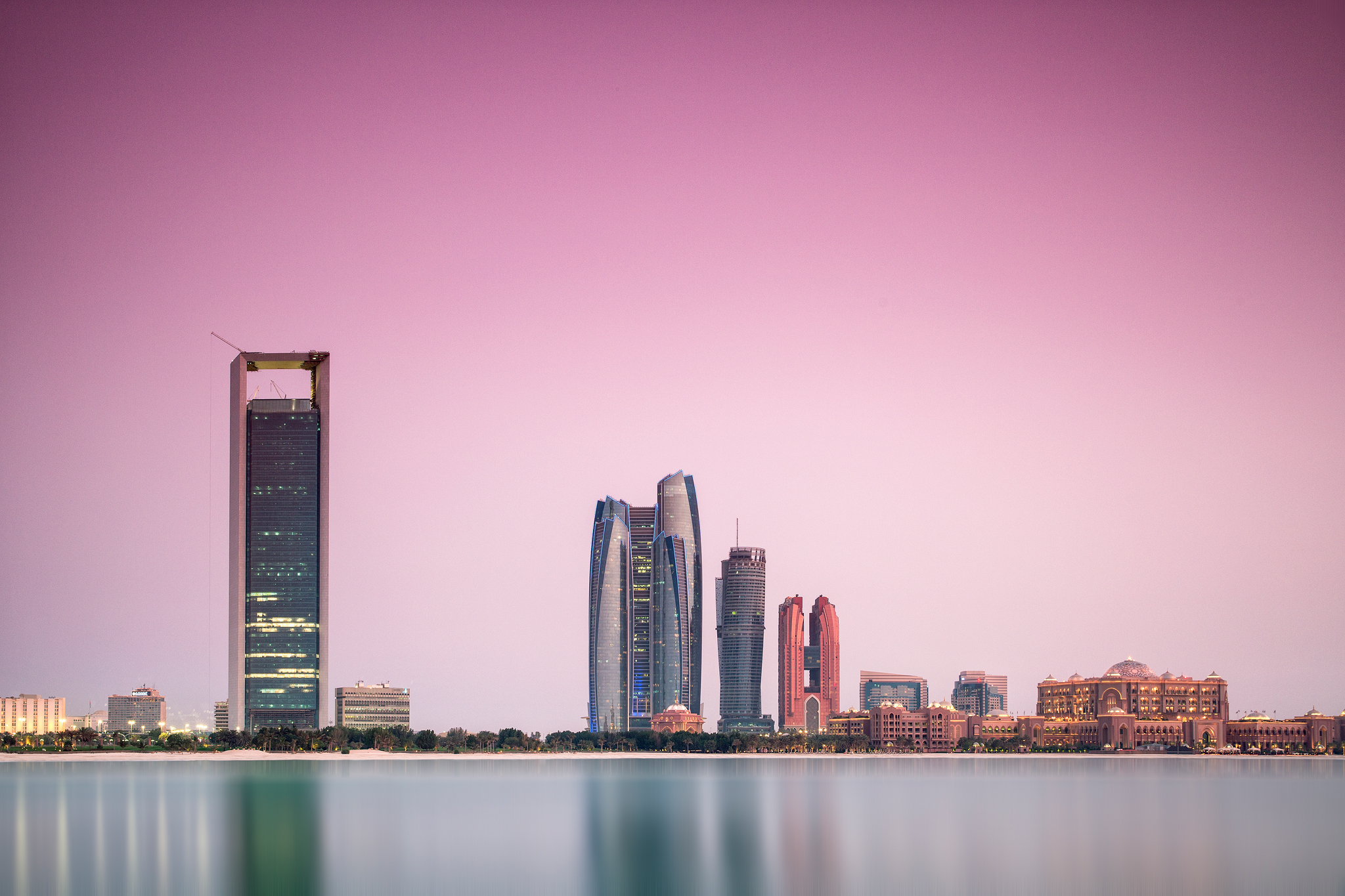
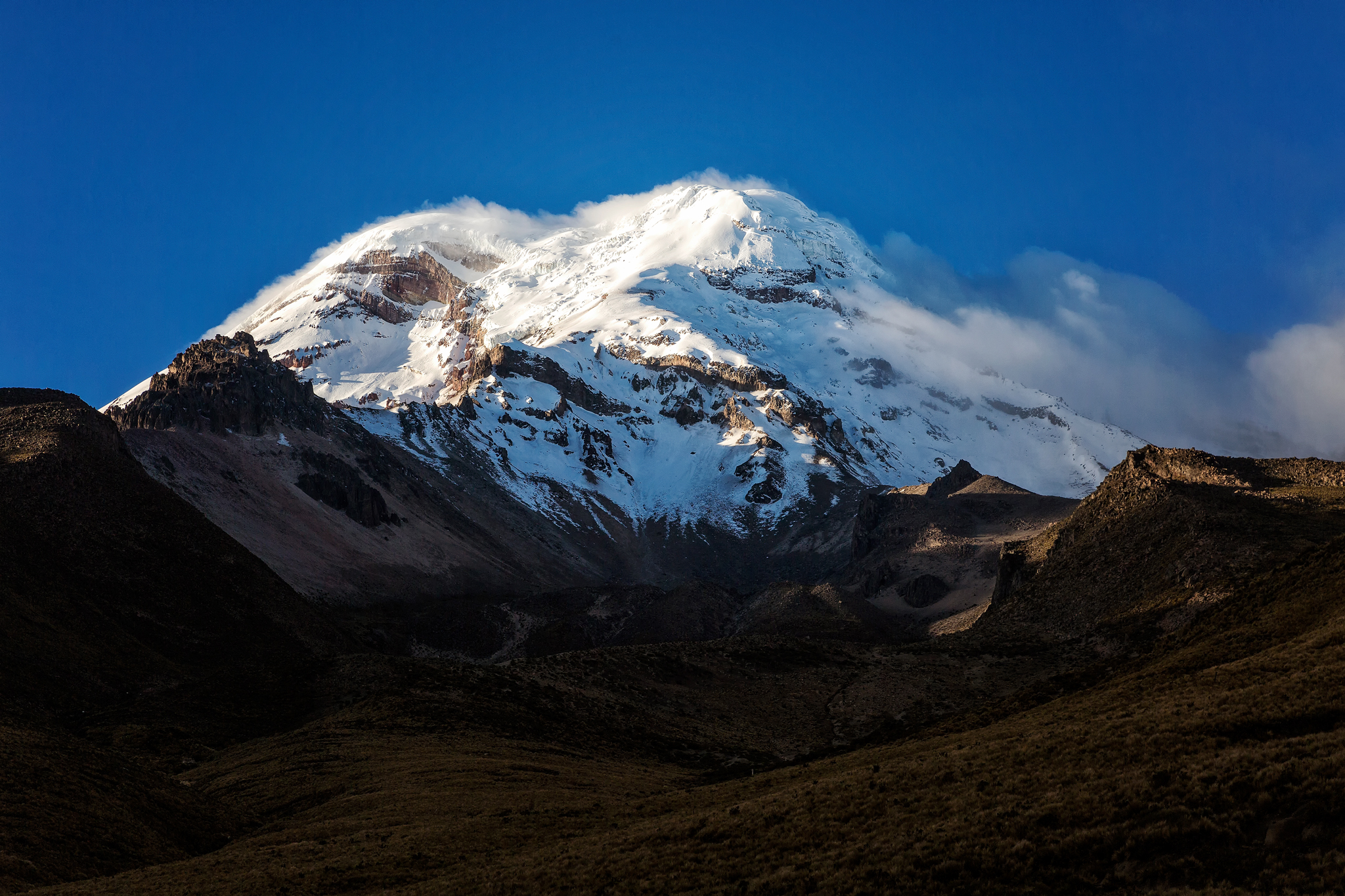
The final AI image, generated using McGeehan’s favourite AI, MidJourney, is the most interesting and striking, and forms this article’s banner (see: top of this page). Produced using a technique he calls “photo mixing”, it has an air of science fiction about it. It brings to mind thoughts of Interstellar, Logan’s Run, and 2001: A Space Odyssey with a touch of CD Project Red’s game Cyberpunk 2077. When creating this image, McGeehan added no text instructions for the AI beyond the image selection; this is MidJourney fully in control. Perhaps I should be disturbed but, as a visual experience, I must admit to really enjoying it. It does not remove my scepticism with regards to AI, but nonetheless I like it.
As well as asking McGeehan to create these images, I also asked his opinions on the advancement of AI. He notes that,
“All advancements in technology come with positive and negative potential. That always was and always will be. Take for example, the internet: it allows us to look up facts instantly, or keep in contact with old friends and family, but at the same time it also polarizes our society with the quick spread of misinformation, or the happenings of the dark web. The simple fact is that AI is going to change how literally everything was and is, from art to medicine. I do hope that as this technology evolves, people and the government make the right decisions, because I don’t think we as humans, as a society, are prepared for such fast advances as we might see in the next 10 years, or 30 years. I also think this “lack of readiness” is why so many have an instant, and usually misinformed, aggression towards AI.”
I also asked him for his thoughts on how AI will affect photographers. He is sanguine on the matter.
“AI is just another tool for creatives, and so I am sure many photographers will welcome these advancements, and others will ignore them. Many of us already utilize AI such as the Spot Healing Brush or Content-Aware Fill in Adobe Photoshop, and so I think what feels new and strange today will become a normal part of our medium’s workflow in the future. Technology is all about making things easier and more accessible to the masses. If we all had to use collodion wet plate process, there would likely be fewer good photographs, and less photographers. Instead, digital cameras opened the doors to more good images, and more good photographers.”
As well as talking to McGeehan, I also contacted timelapse and architectural photographer Beno Saradzic, one of the most recognisable names in the UAE’s photography scene and the featured artist in the August 2020 edition of this column. Saradzic sits firmly in the negative camp when it comes to the use of AI in photography and is extremely passionate and forthright on the matter.
“I dislike the fact the AI art lacks originality and creativity. AI isn’t self-aware. It’s a computer code and it doesn’t know what art even is or isn’t. It’s merely a trained model, using pre-programmed algorithms written by humans, fed with the actual artworks of living and dead human artist, without their consent if I may add – but that’s a separate debate. Without the artworks of people who experienced something in their lives that made them take that shot, draw or paint that canvas, there never would have been any art to feed into AI to learn from. Human artists have been somewhere. They have done something in their lives, before they transmuted their experiences into art. They went through heartbreak, experienced sadness, solitude, madness even, birth and death of a loved person. They walked through life with anxiety, hopes, fears and dreams. They were sick, they healed. They laughed and cried. They felt. That’s the blood and meat of art. Not a software code running on the cloud server! If you don’t understand the essence of this, the debate about AI “art” is lost.
What personal touch does the AI art give to the world? Where is the emotional depth that is present in art created by humans? Or the authenticity? How does one value AI art which is a mishmash of known and anonymous, human-made artworks, thrown in a software blender and squirted onto your computer screen like a smoothie?”
Saradzic also sent me a Petapixel article about how David Holz, the founder of MidJourney, admitted they used many millions of images to train the AI without the consent of the artists. This included photographs and artwork still under copyright. The artists concerned had no option to allow this and no permission was obtained. This is particularly galling to Saradzic.
“If my hard work is fed into an AI in order to train it, without my consent, and then the same AI art is used commercially by a multi-billion-dollar, for-profit corporation who keeps its investors happy by paying them big fat dividends at the end of the fiscal quarter, then this model is broken. I do not consent to it. It won’t work. There will be class action lawsuits against those companies who blatantly break the copyright and act with total disregard for ethics. I see it already. The AI art model, as it exists today, has to be destroyed and re-made in a fair way where nobody gets screwed in the process.”
In addition, he alerted me to a further Petapixel article about a photographer who, after collecting a series of simple portraits of models (including their selfies), then used an AI with these pictures to create the images his client needed. So much for using your lighting, composition, and photographic skills to fulfil the brief. I must admit to finding this particular occurrence rather depressing.
One thing I learnt in researching this article is that things are never entirely clear cut when it comes to the use of AI in photography. I rarely discuss camera equipment or processing software in my columns, but for this subject it is worth a mention. Recently, I was fortunate enough to spend some time using Sony’s new Alpha 7R V camera. It is an impressive beast of a machine. Sony’s already remarkable eye tracking autofocus, which uses an AI, is cranked up a notch. Firstly, it can now account for glasses in a portrait and focus on the actual eye. In addition, it can be programmed to recognise a particular person. So, if you are shooting a wedding, it can pull the bride’s face out of a crowd and focus on her with little effort on the part of the photographer. It is not just cameras either. As we mentioned above, Adobe’s Photoshop now has neural filters, sky replacements, content aware healing brushes that are all controlled by the software’s AI. This raises a challenging question: Are some uses of AI in photography fine whilst others are unacceptable?
I believe it comes down to creative control. What has led to the final image? If an image has been run through an AI such as MidJourney, it is no longer a photograph but is now a piece of digital art based on a photograph. I think using an AI like MidJourney removes the ‘hand’ of control to too great a degree. Perhaps I am naïve, but photography should still have some connection to truth. The border between photography and digital art may be becoming increasingly blurry with the advent of the most modern Photoshop functions, but I think it is still there. I would like to explore this boundary in more detail, but that goes beyond the scope (and word count) of this article, so I shall save it for another day.
None of this is to argue that there is not skill involved in the generation of AI created images. McGeehan’s AI work demonstrates that there clearly is impressive technique and insight there. I would also note that he himself does not consider AI images to be photography. This is an area where I think the three of us find agreement. Saradzic’s position is clear. However, McGeehan notes that, “The fundamental definition of photography is to draw with light, capture light, and use light to create. A camera, a flatbed scanner, or cyanotype chemicals all utilize light to create, and therefore are photography. AI creates via code, algorithms, mathematics – not light.”
We all agree that AI will not be going away. One of my own biggest takeaways from producing this article is that I would like to sit down with McGeehan and Saradzic over a beer or coffee and see where the discussions on the matter take us. There is much more to be said. So much can be done using an AI and that includes writing articles – although not this one! We have not even begun to consider and discuss the deeply disturbing use of deep fakes. However, whatever our position on using AI to manipulate photographs, we are going to have to get used to its existence. I agree with Saradzic that we need to get things right now when it comes to the direction of AI in art and photography in particular. Photography is something that I love and whilst it always changes, grows, and evolves at its core it is about all those facets, features, cliches, and above all wonderful human-made images that describe what it is. I want that to continue.
Finally, I wish to thank Beno and Shane for their contributions to this article. It could not have been completed without them. I also want to thank Professor Rick Halpern, Associate Professor Anthony Lake, and May Tam for reviewing each Look Closer article, and Tomasz for deeming them worthy of publication. Finally, thank you dear reader for giving your time to read and comment on my articles over the last twelve months. I want to wish every single one of you a wonderful, peaceful 2023.
BENO SARADZIC
SHANE MCGEEHAN
PROMPTER GUIDE
THE DREAMING STATE


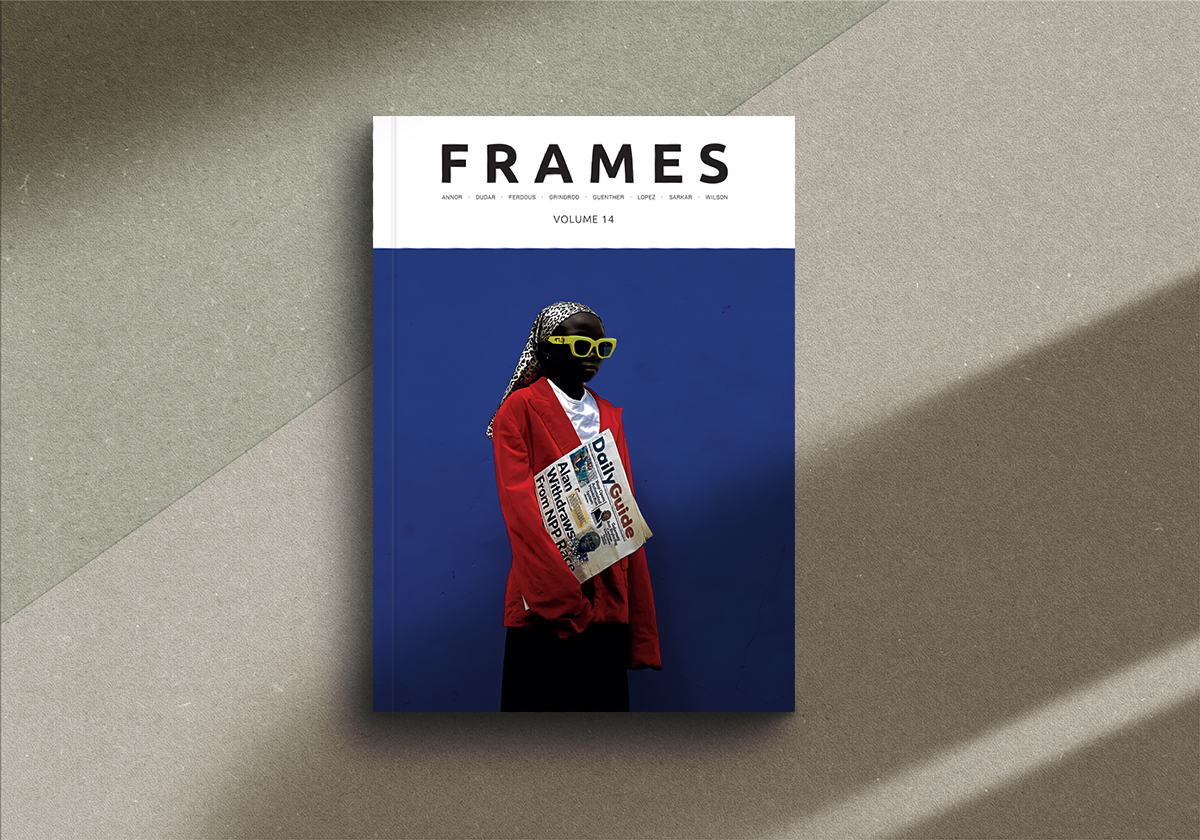
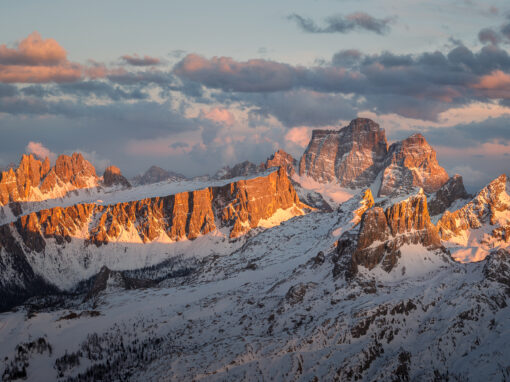
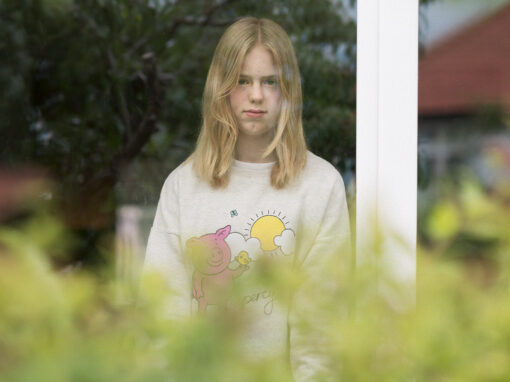

Diana Nicholette Jeon
December 31, 2022 at 20:55
I’ll start by saying I think most readers here already know I am an avid user of AI and have an agenda…to bend it to my will to make work that looks like MY photographic work.
The PetaPixel article quoted here has been used all over the web by artists who are taking up their pitchforks to AI. The quotes are taken out of context, and used by an author with an agenda to underscore his point that AI is an abuse of artists. I would urge anyone who wants to know what the context was for the quotes to read the actual interview they are pulled from, which was done by Forbes Magazine in Sept. You can find that here:https://www.forbes.com/sites/robsalkowitz/2022/09/16/midjourney-founder-david-holz-on-the-impact-of-ai-on-art-imagination-and-the-creative-economy/?sh=744478592d2b
Midjourney’s Holz is also personally not a fan of photorealistic works done on his platform. He fears deep fakes and NSFW being made with his SW, and photo work dances at the edge of his comfort level (he has said this in his office hours more than once.) It would behoove both AI enthusiasts and AI haters alike to actually learn how AI works. Many people have misunderstandings about it “searching the net in response to prompts” or that it makes virtual collages from images stolen from others, which is not the case. The Diffusion models are complex, but they create new images, even when fed a photo or sketch of your own you want it to use as the basis.
There are over 5 billion images in the data set known as LAION, and whether or not it will make something close to another artist’s style will depend on how it is prompted…AND how it was trained. Just a name of an artist will not work if the AI was not specifically, deeply, trained to learn the characteristics of, say, work by Sally Mann or Diana Nicholette Jeon. Hint, it knows Sally and not me, even though I’ve found 40 of my images are in the dataset and can track them to where they came from thanks to “Have I Been Trained.” Forty images from 5 billion is like giving a penny to multimillionaire. The likelihood of the majority of people on the planet who make art being able to be identified by the trained data sets is very slim. However, those concerned about it can go to the “Have I Been Trained” site and register to not have their works used, as the creators are working with the LAION creators to have the next set exclude them. Stable Diffusion’s next version is also stated to remove prompting by name, but until it comes out, we will not know for sure. Further, some names and image titles are banned. For example, on Midjourney, one cannot prompt for “afghan girl” OR “Steve McCurry”; trying to get around the banned terms can result in having your account suspended or you banished. Each platform uses it SW differently and what you can do on one you cannot do on another, and that is true of how you prompt each one, as well.
The reason many of us pay for Midjourney is due to the artsy vibe it has, as well as a wide variety of versions with different outputs, and a large amount of user controls for dialing in what YOU want rather than what the AI wants to give you.
Personally, I find this quote by Saradzic to be both under-informed and inflammatory: “What personal touch does the AI art give to the world? Where is the emotional depth that is present in art created by humans? Or the authenticity? How does one value AI art which is a mishmash of known and anonymous, human-made artworks, thrown in a software blender and squirted onto your computer screen like a smoothie?” I beg to differ. I feel like the old computer quote, “garbage in, garbage out” is applicable here. If you prompt for something highly emotional and based on you, and spend the time required to refine it, you will get art with emotional depth. I have amassed a number of comments including from curators and a pretty well known traditional photographer who has shot people from Obama to Tom Cruise that says that to be true of some of my work. Whether or not someone chooses to use it is a personal choice. If they do, whether or not they spend the time needed to use it well, as if it was any other artistic tool they may want to use, will show in the output.
No matter what choice one makes about it, they should make it from a place of knowledge. Thanks for covering this hot-button topic.
Rob White
February 11, 2023 at 15:59
NFT’s we’re once the next big thing too.
The thing AI lacks is spontaneity. It lacks authenticity. There’s no extra step of the photographer going above and beyond client wants and delivering something out of left field that blows the client’s mind. There’s no “got it” moment when the right song comes on and the talent makes the perfect expression.
I’m sure it’ll replace some key art and product shots. A lot of key art is already 90% illustration with hero faces being dropped on doubles and environments are all digital. When it comes to control though, it’s much more manageable to direct a tangible person than going back and forth with prompts. There will be situations where people don’t care enough about the result though.
I think it’s something worth delving into if you shoot conceptual or high end ad work. It could become an asset like 3d illustration has. Something to further capabilities. Wasn’t 3d supposed to replace photography? I’ve heard that for 20 years now. I don’t think it’s nearly a threat as it’s made out to be. If it is, it’ll be a good excuse for me to get out of this ruthless industry.